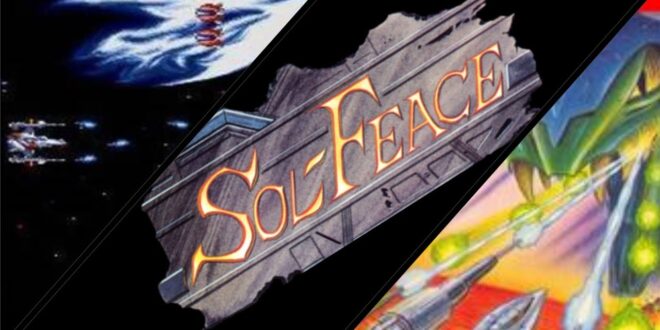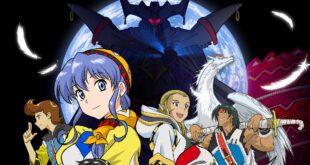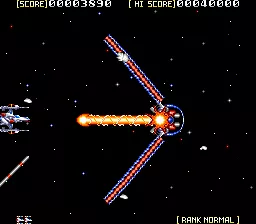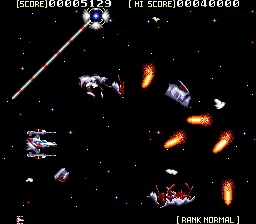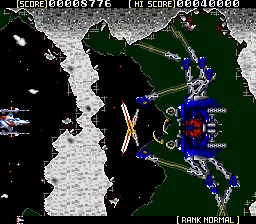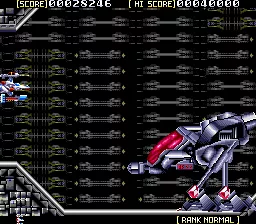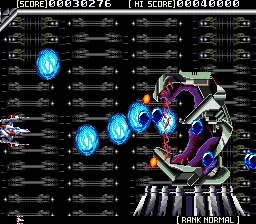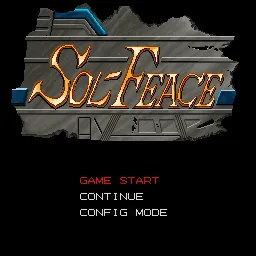Sol-Feace – A Solid Sega CD Shmup with Slick Style
When the Sega CD launched in 1992, players were still figuring out whether the pricey add-on would become the next big leap in console gaming or fade into a niche experiment. Sega promised cutting-edge audio, animated cutscenes, and larger, more ambitious experiences than the cartridge-based Sega Genesis could handle on its own. Among the titles chosen to showcase the new format was Sol-Feace, a horizontally scrolling shoot ’em up originally developed for the Sharp X68000 computer in Japan. For Western players, this game would become one of the early benchmarks of what Sega’s futuristic CD-ROM technology could deliver.
While it never reached the iconic status of arcade titans like R-Type or Gradius, Sol-Feace carved out its own place in shmup history by blending sharp visuals, responsive gameplay, and an impressive CD soundtrack. To this day, it remains an interesting time capsule — both as a solid entry in the shoot ’em up genre and as one of the Sega CD’s earliest attempts to prove its worth.
For a deep dive into the development and variations across platforms, the excellent write-up at Sega Retro is essential reading. But here, we’ll focus on the gameplay, style, and why this space shooter still deserves a spot in your retro collection.
Story
The plot in Sol-Feace is lean, but in the early ’90s, shmup players weren’t expecting the next Final Fantasy–sized epic. You take command of the Sol-Feace starfighter, humanity’s last line of defense against a rogue AI supercomputer and its alien-influenced mechanical army bent on galactic domination. The game unfolds over seven stages, each ramping up in intensity as you blast through enemy fleets, asteroid fields, fortified bases, and massive warships.
The Sega CD release adds animated cutscenes between missions, providing glimpses of your mission briefing and the enemy threat. These sequences, while primitive by modern standards, gave players a taste of the “multimedia future” Sega was selling. Even though the story doesn’t dig deep into lore, the brief cinematics give you just enough motivation to hop back into the cockpit and keep blasting.
Visuals
Visually, Sol-Feace struck a solid balance between spectacle and clarity. The sprite work is crisp and detailed, and the Sega CD hardware allowed for larger, more colorful enemies and backdrops than many Genesis-only shooters of the era. Space stations feature glowing panels and intricate machinery, alien warships pulse with bio-mechanical energy, and bosses often take up nearly the entire screen, creating that sense of overwhelming scale that fans of the genre crave.
The backgrounds scroll smoothly, with layered parallax effects that give the illusion of depth as you weave through waves of enemy fighters. While the graphics don’t quite match the sheer visual chaos of later Genesis shooters like Thunder Force IV, they remain vibrant and polished. More importantly, they never sacrifice clarity for flash — you can always keep track of enemy fire and your ship’s hitbox, which is crucial in a game where dodging patterns is half the battle.
For comparison, check out our Keio Flying Squadron Sega CD review, which released in the same year and leaned much more heavily into cartoonish visuals and humor. Sol-Feace, by contrast, stuck with gritty, metallic science fiction imagery — a reminder of just how diverse the Sega CD library really was in its early days.
Sound
If the graphics gave players a sense of “bigger and better,” the audio sealed the deal. One of the Sega CD’s biggest selling points was CD-quality soundtracks, and Sol-Feace doesn’t disappoint. Its rocking, synth-driven score matches the frantic pace of gameplay, layering electronic beats with soaring melodies that wouldn’t feel out of place in a late-’80s anime or action film.
Every stage has its own theme, driving the action forward with energy and atmosphere. Explosions crackle with satisfying force, laser beams sizzle across the stereo channels, and the climactic boss fights crank up the intensity. Compared to cartridge-based shmups on the Genesis, the difference in clarity is immediately noticeable. For players in 1992, it felt like stepping into a cinematic experience rather than “just another video game.”
Gameplay
At its heart, Sol-Feace is a traditional shmup. You’ll spend most of your time weaving through swarms of enemies, dodging intricate bullet patterns, and managing your arsenal of weapons. The game offers a variety of power-ups, including twin shot cannons, homing lasers, and powerful beam weapons. Strategic placement of your ship’s gun turrets allows you to fire in multiple directions, giving you a tactical edge when enemies attack from behind or from awkward angles.
Each stage introduces new mechanics to keep the action fresh. Some levels force you through tight, maze-like corridors filled with environmental hazards, while others throw massive open battles at you with dozens of enemies on screen at once. The boss fights are highlights — screen-filling mechanical monstrosities that require patience, reflexes, and pattern recognition to defeat.
The controls are tight and responsive, one of the most important qualities in a good shmup. The learning curve is fair: newcomers can make progress without frustration, while veterans will find plenty of challenge in the later stages. The Sega CD version also includes a two-player cooperative mode, letting friends team up to double their firepower. This mode alone makes Sol-Feace stand out, as co-op shmups were still relatively rare on consoles in the early ’90s.
Replay Value and Legacy
While Sol-Feace doesn’t necessarily innovate, it executes the fundamentals of the genre with polish and confidence. Its straightforward approach means shmup veterans will feel right at home, while casual players can still enjoy blasting through a few stages without committing to memorizing every bullet pattern.
The game’s legacy is tied closely to the Sega CD itself. As an early pack-in title in North America, it helped define how the add-on was perceived by new buyers. While later Sega CD games would lean more into full-motion video or experimental concepts, Sol-Feace proved that the system could enhance a traditional genre without gimmicks. In that sense, it was both a safe and smart choice for Sega’s marketing strategy.
Today, it remains a fan-favorite among collectors and shmup enthusiasts. It may not enjoy the same recognition as Thunder Force or R-Type, but its presence on the Sega CD makes it an important piece of the console’s history. It’s also a reminder that while the Sega CD library was relatively small, it contained gems that went beyond the “FMV novelty” reputation the system often gets saddled with.
Final Verdict
Sol-Feace is a game that knows exactly what it wants to be. It doesn’t break new ground, but it doesn’t need to. With detailed 16-bit visuals, a pulsing electronic soundtrack, smooth controls, and rewarding gameplay, it delivers a reliable and exciting shmup experience. For Sega CD owners in 1992, it felt like a glimpse into the future of console gaming. For retro gamers today, it stands as a reminder of an era when Sega was taking bold risks with hardware and game design.
If you’re a shmup fan, Sol-Feace deserves a spot in your library. It may not convert skeptics of the genre, but for those who appreciate precise controls, challenging bosses, and a soundtrack that pumps pure adrenaline, this game still delivers the goods. Whether you’re revisiting it for nostalgia or experiencing it for the first time, Sol-Feace remains a shining example of Sega’s early ’90s ambition — a solid shmup with plenty of slick style.
Review
Graphics - 77%
Sound - 80%
Gameplay - 82%
Replay value - 90%
82%
A SHUMP well known to Sega CD fans.
 Retro Replay Retro Replay gaming reviews, news, emulation, geek stuff and more!
Retro Replay Retro Replay gaming reviews, news, emulation, geek stuff and more!
